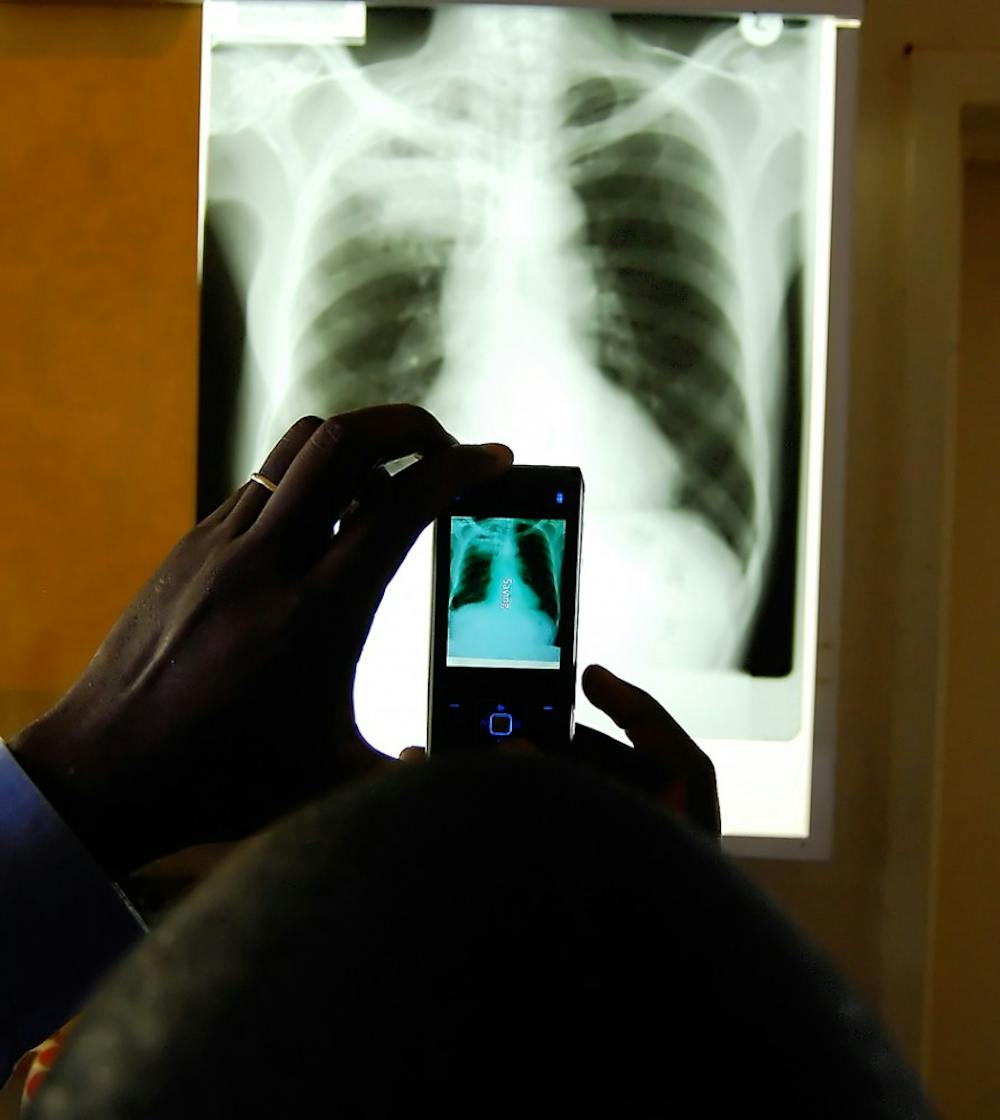Cell phones have become the newest accessory in medicine.
The Botswana-UPenn Partnership has begun to use cell phone technology as a way of increasing access to medical care in rural and under-served areas in Botswana.
Referred to as “telemedicine,” the use of telecommunication technology was first implemented in the field of dermatology in an internet-based application called the Africa Teledermatology Project, according to assistant professor of Dermatology Carrie Kovarik.
“However, once we got out of urban areas, internet connections became scarce,” Kovarik said.
According to Kovarik, cell phone networks have grown extraordinarily in Africa, with 3G and other signals reaching even the most remote parts of the sub-Saharan country. As phones advanced in their signal quality, cell phone cameras also began to capture higher quality pictures, she explained.
“Even people who couldn’t afford meals have cell phones, and although they might not always have minutes, there are still ways to reach them,” she added.
The Botswana-UPenn Partnership equipped health care workers in five district hospitals with cell phones in order to increase communication between medical specialists and community doctors concerning patients living in rural Botswana villages with little access to medical care.
“For some people, the roads may make it difficult to reach a specialist for a consultation,” Kovarik said, explaining that mobile phone medicine can bridge the gap in communication when it comes to efficiently delivering quality health care.
Aside from enhancing patient care, the telemedicine technology allows University of Botswana medical residents to enhance their education by using a “common digital platform” to receive mentorship from faculty at the University of Botswana, Kovarik said.
Grants from the National Library of Medicine and Center for AIDS Research are used to purchase the cell phones. The Orange Foundation, a philanthropic division of France Telecom, donated the minutes needed for the phones to operate.
The partnership’s Mobile Telemedicine Programs Manager Ryan Littman-Quinn explained that the program’s IT infrastructure provided the largest challenge to the successful implementation of telemedicine. “For our mobile teleradiology pilot, an x-ray machine broke in the district hospital where we conducted the pilot, so while our phones and staff were all functioning, there were no x-ray images to send for months,” Littman-Quinn wrote in an e-mail.
Quality assurance of the images taken with cell phones is also a concern in telemedicine. “Telemedicine as a specialty has really been proven over and over,” Kovarik said, pointing to numerous double-blind studies in which physicians reviewing medical reports as phone images reached the same conclusions as doctors reviewing scans in person 85 percent of the time.
Despite concerns of quality assurance, telemedicine is a growing field, even among student organizations at Penn.
The Penn Global Health Initiative, a pro-bono, student-run consulting group that works with global NGOs, incorporated mobile phone medicine into its Hope Phones Project, in which members of the club collected recycled cell phones from the Penn community.
The recycled phones were sent to FrontlineSMS, an organization that equips health care workers around the world with simple cell phones to access local health care facilities and specialists on behalf of residents in rural villages, PGHI Vice President and College junior Regina Lam said.
“Each recycled iPhone can purchase seven or eight phones,” Lam explained.
For the Botswana-UPenn Partnership, setbacks in IT infrastructure did not deter the telemedicine initiative from expanding into new fields like radiology and oral medicine. The partnership hopes to initiate a second pilot in which it plans to extend telemedicine to seven other Botswana hospitals.
“Self-sustainability is our ultimate goal,” Littman-Quinn wrote in an e-mail. “I think the strongest part of our program is not the technology, but the contributions and enthusiasm of the diverse individuals involved — from the healthcare workers using the phones to our IT colleagues at the University of Botswana to the higher-ups at the Ministry of Health and Orange Foundation.”
Editor's Note: This article was updated from its print version to reflect that University of Botswana medical residents can receive mentorship from University of Botswana faculty as part of the telemedicine program, rather than medical students.



